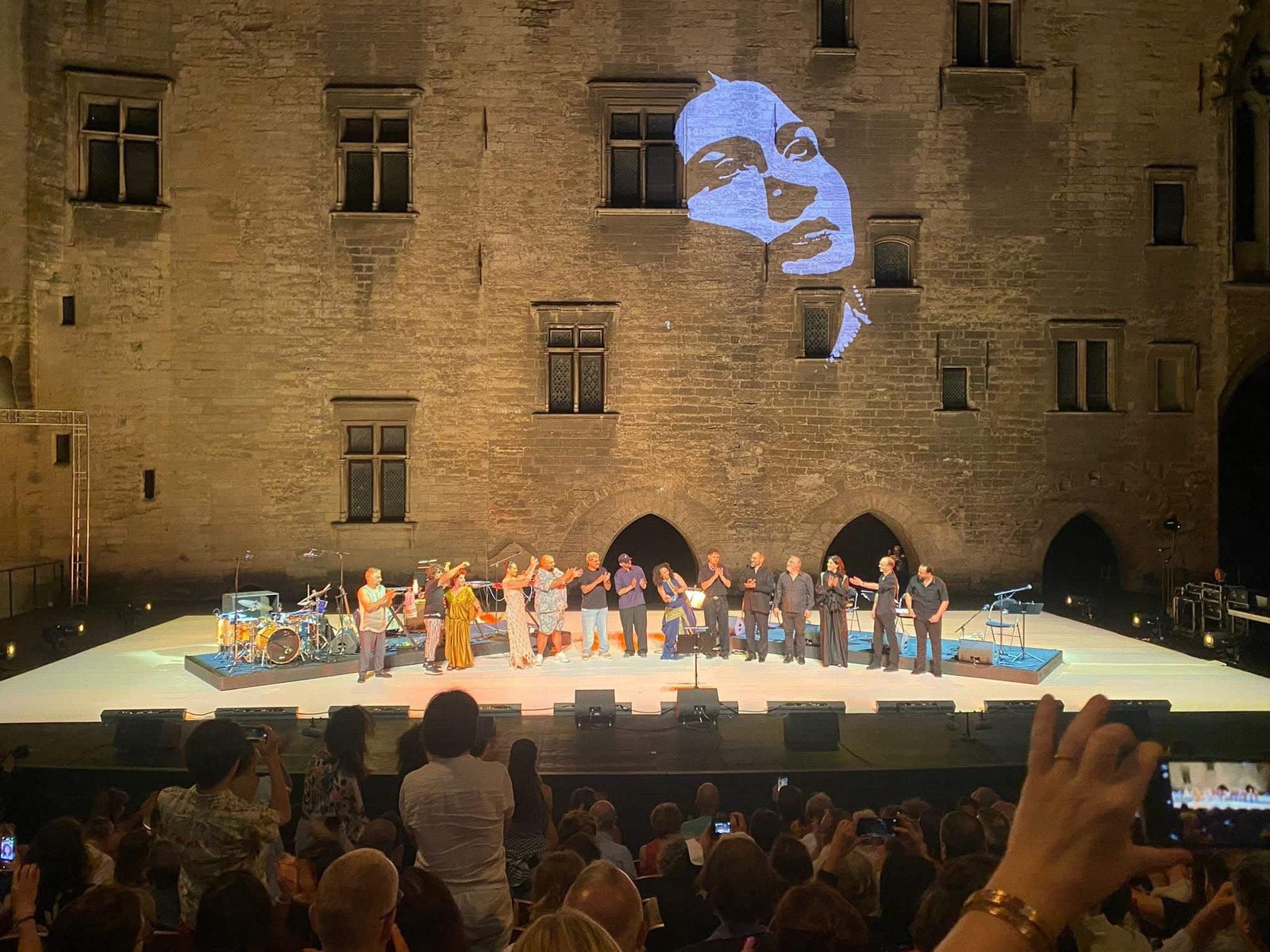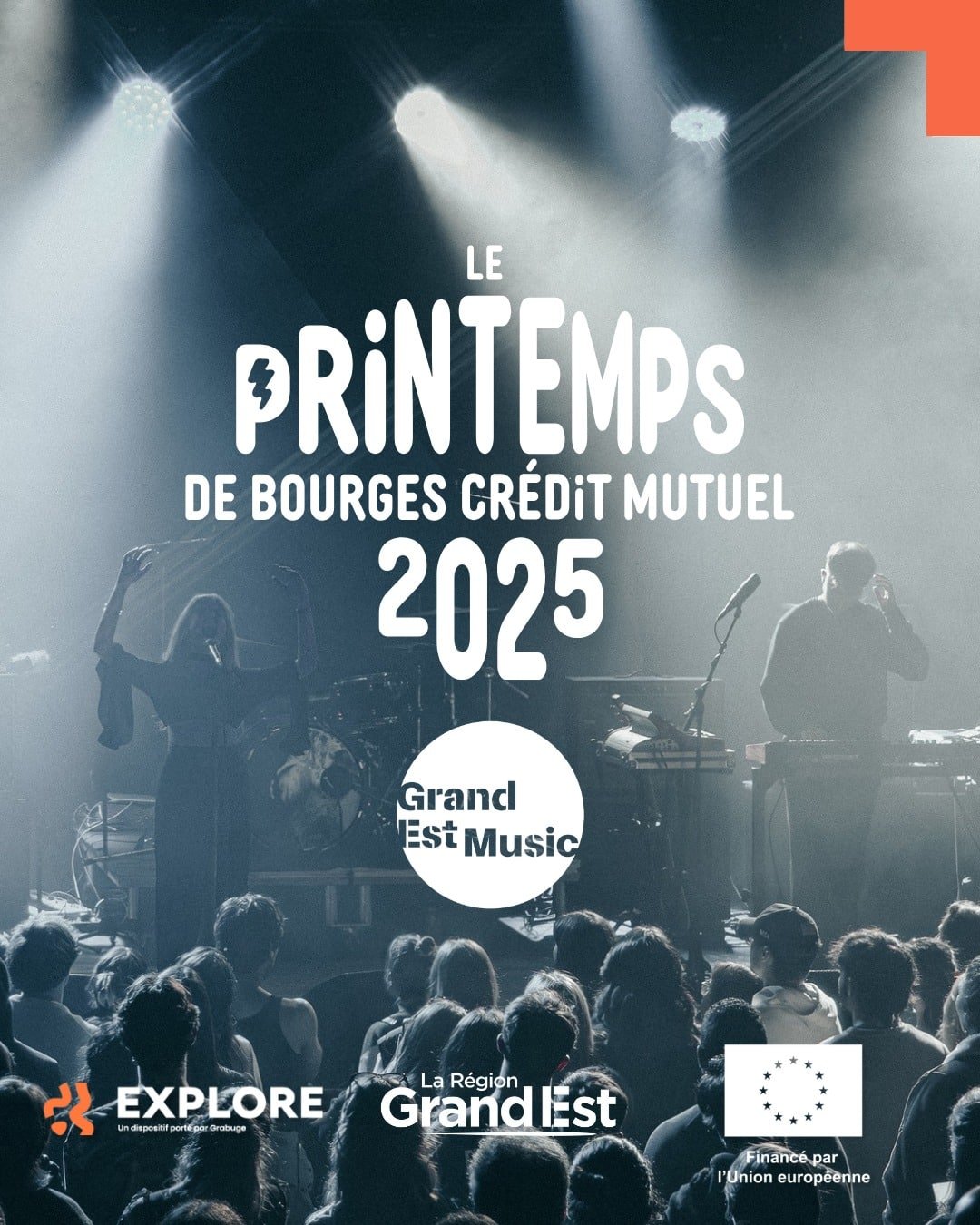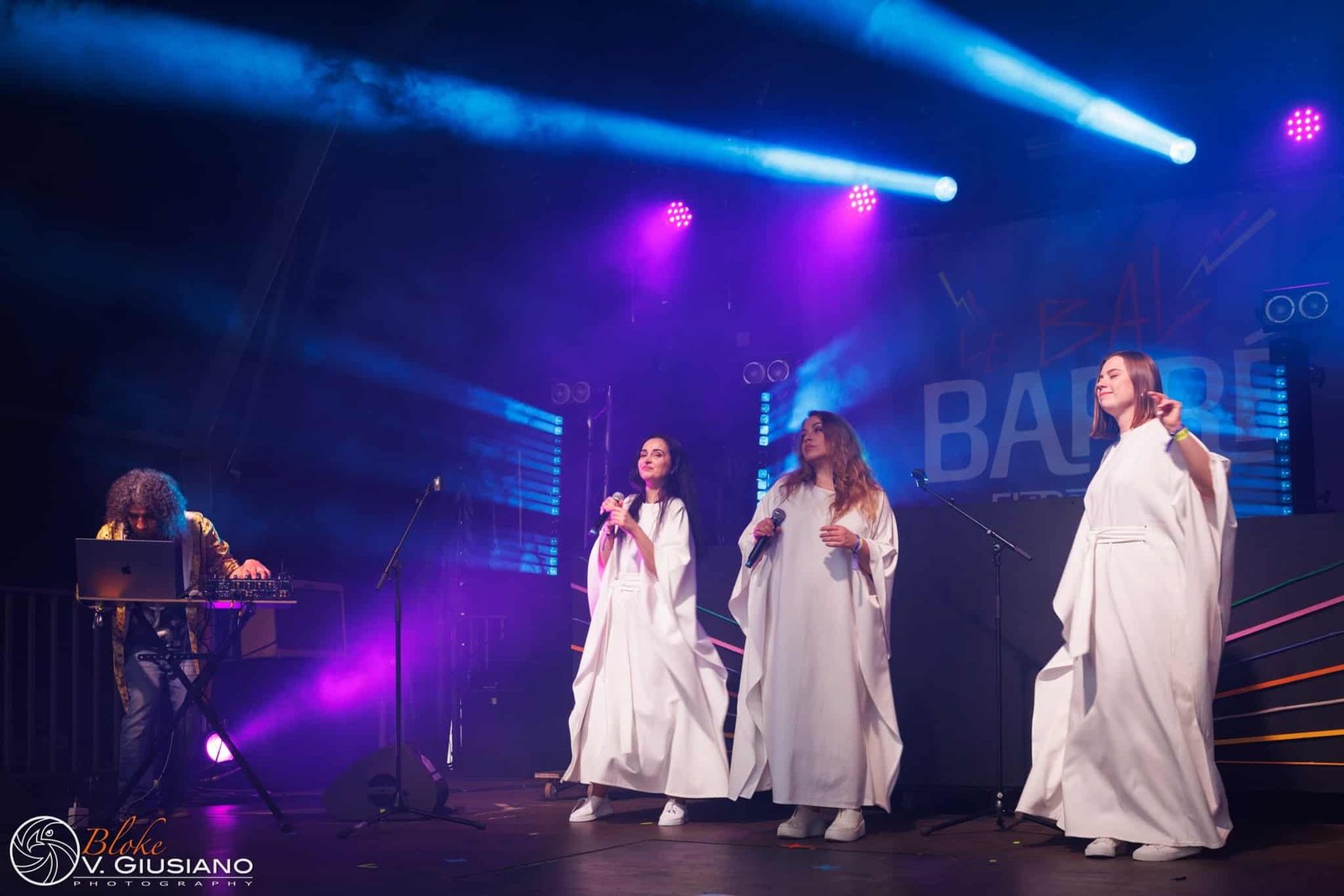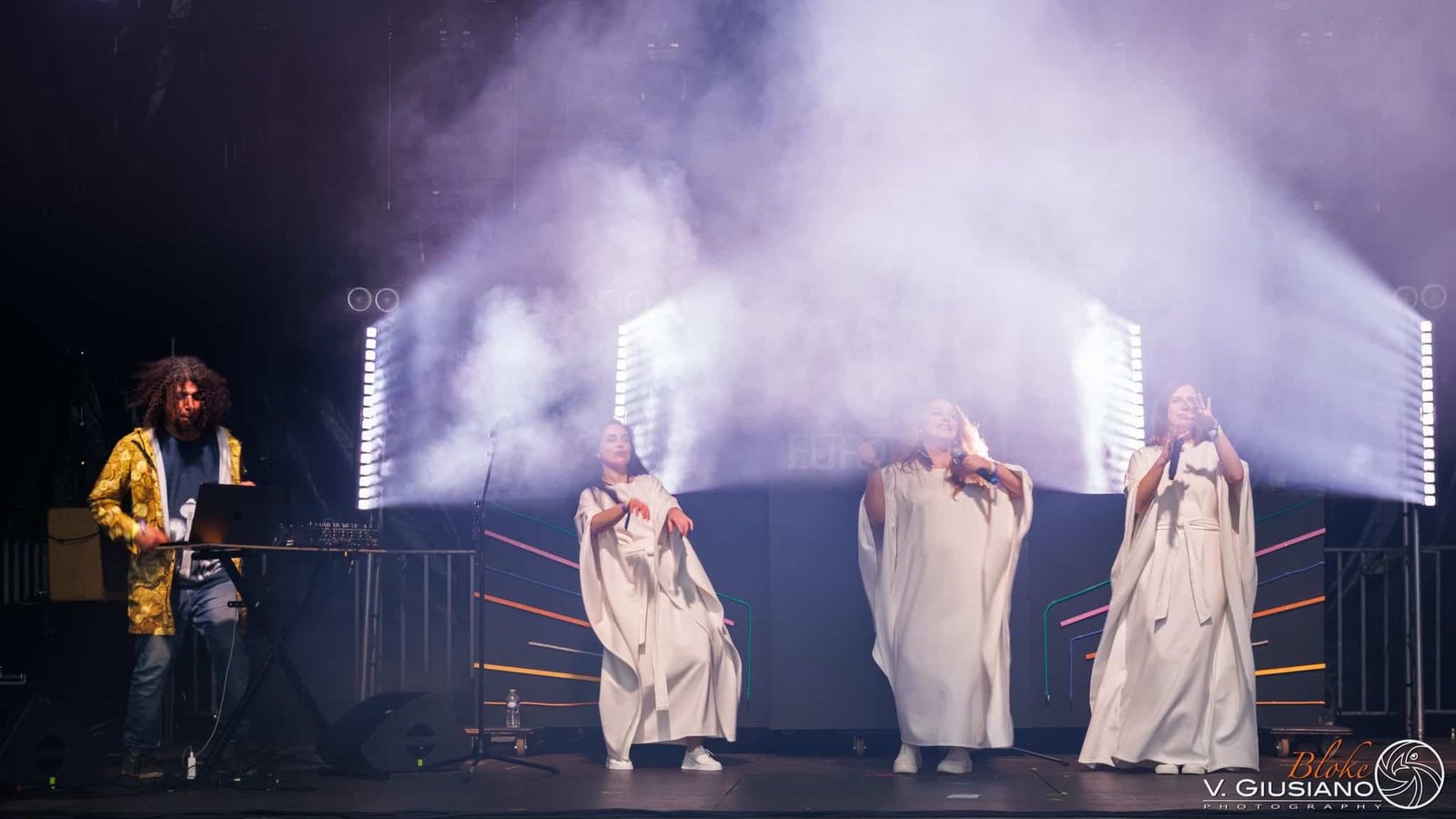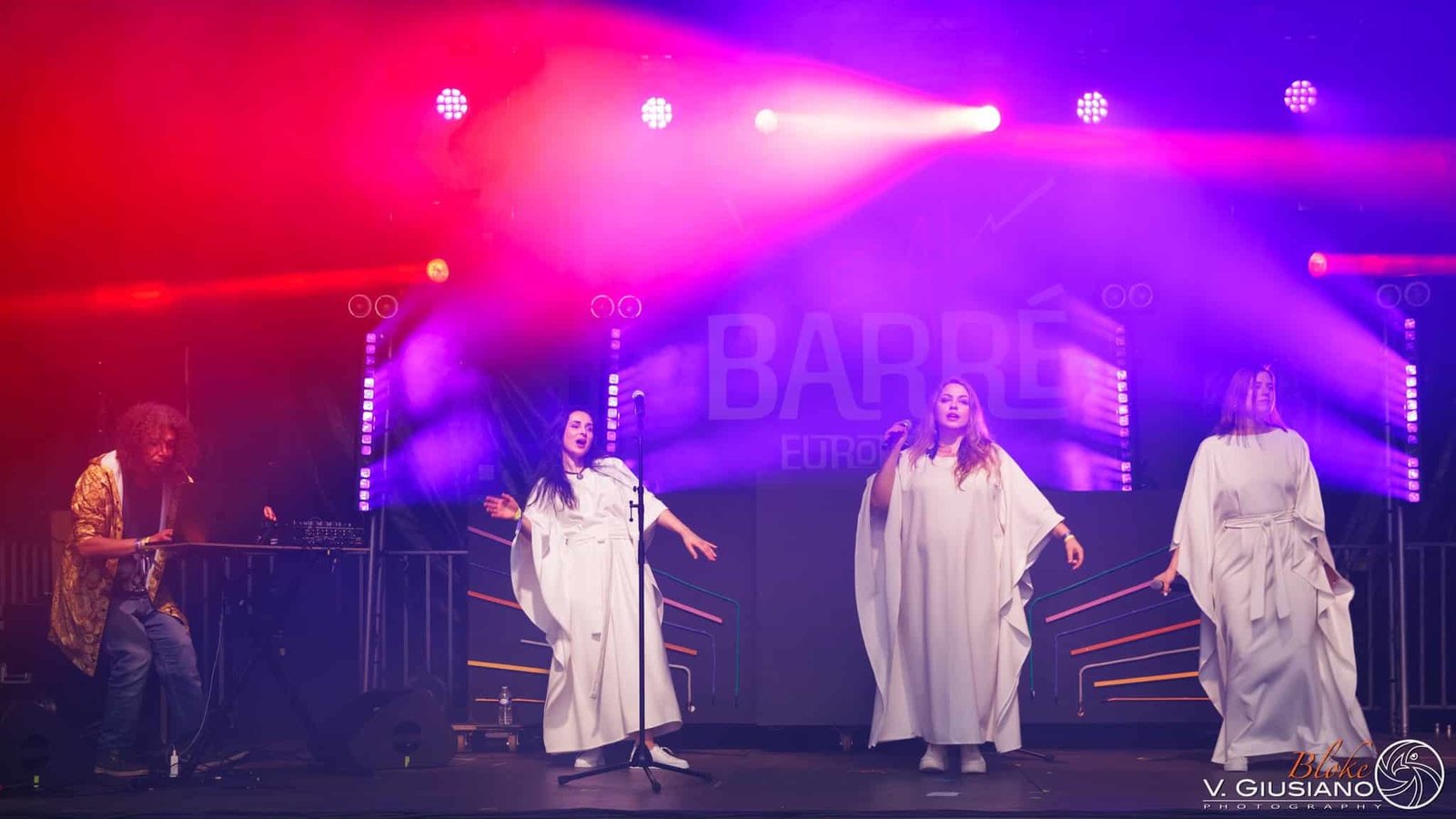Printemps de Bourges – France 2026
Background & History
The Printemps de Bourges, a cornerstone of Europe’s spring music scene, was established in 1977 by visionary promoter Daniel Colling, alongside Alain Meilland and Maurice Frot, as a defiant response to the cultural inertia of post-1968 France, transforming the medieval city of Bourges—famous for its 13th-century Gothic Cathedral of Saint-Étienne, a UNESCO World Heritage Site since 1992, and its Renaissance Palais Jacques-Cœur—into a pulsating hub of contemporary sounds. Conceived amid the era’s punk explosion and France’s decentralization reforms under Mitterrand, the inaugural edition drew 5,000 attendees across 10 venues, featuring emerging acts like Téléphone and international jazz legends like Miles Davis, quickly positioning it as the “lanceur de la saison des festivals” by blending indie rock, electro, hip-hop, and world music in a multi-site immersion that echoed the communal ethos of Woodstock while rooting it in Berry’s pastoral landscapes. Colling’s vision, inspired by the UK’s Glastonbury and the US’s Newport Jazz Festival, aimed to democratize music access in provincial France, countering Paris’s cultural monopoly and fostering regional pride in a town of 65,000 that had long been overshadowed by Loire Valley châteaux, generating €5-7 million annually for the Centre-Val de Loire economy through tourism and artisan markets (per regional INSEE data from 2024). Tragically, Colling’s passing in January 2025 at age 78 marked the end of an era, but his legacy endures in the festival’s commitment to discovery, with the 49th edition (April 15–20, 2025) dedicating stages to his memory, including retrospective sets honoring French Touch pioneers he championed.
Over nearly five decades, the Printemps has evolved alongside France’s musical landscape: the 1980s saw it nurture the Nouvelle Vague of French rock with Indochine and Noir Désir, while the 1990s embraced rave culture, hosting Daft Punk’s early gigs amid the rise of techno squats, boosting attendance to 50,000 by 1995 and injecting vitality into Bourges’s economy, which relies on 30% tourism revenue from the event. The 2000s expanded its global reach, partnering with Crédit Mutuel for sponsorships that funded free “Off” gigs in streets and bars, drawing 80,000 by 2010 and supporting 1,000 local jobs in hospitality and tech. Challenges like the 2020-2021 COVID cancellations led to innovative hybrid formats—virtual streams reaching 1 million worldwide—while the 2022 resurgence emphasized sustainability, introducing solar-powered stages and zero-waste zones that reduced emissions by 25% (Greener Festival certified since 2015), aligning with Centre-Val de Loire’s green transition goals. Socially, it has championed inclusivity: The “Prévention” initiative since 2010 addresses mental health with on-site counselors, responding to France’s 20% youth depression rates (Santé Publique France 2024), while gender-balanced lineups (50% female since 2018) counter industry biases, with 60% of iNOUïs discoveries being women-led acts.
In 2026, the landmark 50th edition (April 14–19) will honor Colling with a “Heritage in Harmony” theme, potentially featuring archival exhibitions of 1977 posters and reunion sets from alumni like Jean-Louis Aubert, amid Bourges’s bid for 2028 European Capital of Culture. As a mid-April rite, it blooms like Berry’s cherry orchards, from Colling’s defiant spark to a beacon of alternative sounds that nurtures tomorrow’s icons—where Gothic spires silhouette electro pulses, weaving Centre-Val de Loire’s cultural fabric into a tapestry of renewal and rhythm.
Event Highlights
- Main activities or performances: Across 150+ concerts in 20+ venues, the Main Stage at Le Printemps (Place Séraucourt, 5,000 capacity) hosts headliners like 2025’s Clara Luciani’s ethereal indie-pop and Jean-Louis Aubert’s folk-rock anthems, with 2026’s 50th anniversary projected to feature multi-generational lineups blending French Touch pioneers (e.g., Cassius alumni) with global stars like Rosalía, running from 6:00 PM to midnight daily and drawing 80,000 over six days for a eclectic mix of rock, electro, hip-hop, and world music.
- Special traditions or features: The “Les iNOUïs” showcase, a cornerstone since 1982, spotlights 20 emerging artists across genres, with 60% women and 40% international acts selected from 1,500 submissions—2026’s anniversary edition may include a Colling tribute set featuring past winners like Indochine alumni, fostering discovery in a dedicated tent with free entry and mentorship panels from industry pros like Crédit Mutuel scouts.
- Unique attractions for visitors: The free “Festival in the Streets” scatters 100+ pop-up gigs in Bourges’s alleys and squares, from cathedral cloisters hosting acoustic folk sessions to Hôtel de Ville’s electro-jazz fusions, engaging 20,000 locals with interactive AR apps overlaying historical gig footage on venues—2026’s “50 Years of Sound” exhibit at the Palais Jacques-Cœur displays vintage instruments and posters from the 1977 debut, drawing 10,000 visitors for immersive audio tours.
- Additional points: The “Prévention” zone offers free mental health workshops and noise-cancelling earplugs, a tradition since 2010 addressing festival fatigue, while the eco-village (introduced 2015) hosts sustainable cooking demos with local Berry produce, reducing waste by 30% through compostable materials and solar-powered charging stations for 5,000 devices daily.
Date & Duration
- Dates: April 14 – April 19, 2026 (confirmed 50th anniversary; 6 days with pro day April 13 for industry networking and showcases)
- Duration: 6 days (main programming April 14–19; extended with pre-festival iNOUïs auditions in March)
- Daily Schedule: Gates open 2:00 PM for afternoon Off gigs and workshops; main stage sets from 6:00 PM to midnight; street performances from noon to late; aftershows in bars until 2:00 AM; family zones close at 8:00 PM for safety.
- Pre-event Milestones: Lineup teasers in January 2026; tickets open February; iNOUïs applications November 2025 with 1,500 submissions reviewed by jury including France Inter scouts; volunteer training March; eco-audits April to ensure Greener Festival compliance.
Venue / Location
- City: Bourges, France
- Main venue: Le Printemps (Place Séraucourt), a historic square in Bourges’s medieval center, hosting the Main Stage for 5,000-capacity headliners amid 17th-century facades.
- Notable areas: Le Barrage (moat venue for intimate 3,000-cap electro sets); Hôtel de Ville (exhibits and panels in Renaissance halls); cathedral cloisters (acoustic folk gigs); city streets for 100+ free Off performances. Compact 1km radius with cobblestone paths—mostly flat but some inclines; free shuttles from Gare de Bourges to venues.
- Google Maps address: 22 Rue Henri Sellier, 18000 Bourges, France (coordinates: 47.080°N, 2.401°E; interactive festival map at printemps-bourges.com/pratique, including venue pins and shuttle routes).
Ticket Information
- How tickets are sold: Online via printemps-bourges.com/billetterie (opens February 2026); phone +33 2 48 27 40 40 (Mon–Fri 10 AM–6 PM); on-site at 22 Rue Henri Sellier or venue kiosks (cash/card, from April 13); partners like Fnac, Leclerc, Carrefour. No resale permitted (fines €15,000 per French law); app for mobile tickets and cashless payments.
- Admission: Paid for main venues; free for Off street gigs and iNOUïs showcases; CSE/group discounts 20% for companies; Yeps youth pass for reduced rates (under-25s €20–€30/$22–$33 USD per day).
- Ticket pricing in USD: 1-day €40–€50 ($44–$55 USD); 5-day €120–€150 ($132–$165 USD); VIP €200–€250 ($220–$275 USD) with lounge/fast-track; under-18 free with guardian; bundles €80–€120 ($88–$132 USD) with camping or merchandise.
- Minimum ticket pricing: $0 USD (under-18, Off gigs); $44 USD (1-day standard).
- Maximum ticket pricing: $275 USD (VIP 5-day with aftershows).
- Special seating or VIP options: Accessible platforms €40–€50 ($44–$55 USD, companion free); VIP includes shaded seating, bars, artist meet-and-greets, and priority for iNOUïs; family zones €30–$40 ($33–$44 USD) for 4 with kids’ access; group CSE passes €100–€150 ($110–$165 USD) for 10+.
Contact Information
- Email: contact@printemps-bourges.com (general inquiries, tickets, accessibility); programmation@printemps-bourges.com (lineup submissions, iNOUïs); communitymanager@printemps-bourges.com (volunteering, partnerships).
- Phone: +33 2 48 27 40 40 (festival office, Mon–Fri 10 AM–6 PM CET; English/French support available).
- Website: https://www.printemps-bourges.com (programme, tickets, map); app for live updates, cashless payments, and chat support.
- Social Media: @printempsdb (Instagram, 100k+ followers for teasers and stories); @LePrintempsDeBourges (X/Twitter, lineup announcements); Facebook (live streams and community polls); YouTube (highlights and playlists); Spotify (curated festival tracks).
- Key Staff: Director: Association Printemps de Bourges team (post-Daniel Colling era); Programming Lead: Crédit Mutuel partners; Accessibility Coordinator: Prévention team—contact via email for specific intros.
- Press/Volunteers: Press kits via contact@; 400+ volunteer roles (stewarding, Off gigs, eco-monitoring) open January 2026 via the website form—training provided, perks include free entry and merchandise.
- Note: Responses within 24–48 hours; GDPR-compliant data handling; multilingual support in English, French, and Spanish for international attendees; subscribe to newsletter for exclusive lineup teasers and ticket presales.
Cultural Experience
The Printemps de Bourges blooms as a vibrant ode to France’s musical springtime awakening, where Bourges’s 13th-century Cathedral of Saint-Étienne—its flying buttresses piercing the April sky—resounds with indie choruses, a 49-year ritual since 1977 blending Daniel Colling’s visionary fusion of counterculture and provincial pride to counter Paris’s cultural dominance, transforming the Berry town’s Gothic spires into stage lights for emerging sounds. The Main Stage at Place Séraucourt pulses with acts like 2025’s Clara Luciani’s ethereal indie-pop, weaving French chanson’s poetic threads with global electro rhythms, while the festival’s multi-site immersion—concerts in cathedral cloisters echoing Gregorian chants with Néo’s hip-hop beats—evokes a modern troubadour fair, drawing 80,000 to dance amid half-timbered facades that once sheltered Renaissance merchants. Costumes add whimsy: Crowds in berets and glow-bracelets for ravers, or Berry tartan scarves for locals—20% attendees embracing medieval-inspired capes, reflecting the festival’s nod to Bourges’s historical festivals like the 15th-century Foire de Saint-Lazare, blending tradition with contemporary flair.
Performances throb with cultural duality: The “Les iNOUïs” tent, a discovery ritual since 1982, spotlights 20 emerging artists with 60% women-led sets, fostering intergenerational dialogues amid Berry’s pastoral landscapes, while Off gigs in streets like Rue Bourbonnoux fuse electro with Occitan folk fiddles—countering urban isolation in a town of 65,000, where 40% visitors cite the festival as a “mental health reset” (festival surveys 2024). Traditions endure: The “Fête la Pause” wellness zones, introduced in 2010, offer yoga sessions amid blooming cherry orchards, honoring Colling’s ethos of music as therapy, while the eco-village—solar-powered since 2015—hosts cooking demos with local lentil stews, reducing waste by 30% and tying to Centre-Val de Loire’s green heritage from Loire vineyards. Local customs infuse the vibe: Picon bière toasts (€5/$5.50 USD) in beer tents pair with pétanque games under plane trees, evoking Bourges’s 17th-century market fairs, while the “Prévention” stands provide free earplugs and counseling, addressing festival fatigue in a supportive community space.
Inclusivity resonates throughout: Gender-balanced lineups since 2018 and magnetic loops for hearing-impaired sets draw 25% diverse attendees, with BSL-interpreted performances ensuring accessibility amid the festival’s rhythmic inclusivity. As twilight drapes the Palais Jacques-Cœur—its Renaissance gems glowing like stage lights—the Printemps transcends concert: a 50-year saga where springs of sound mend winter’s silence, turning Bourges into Berry’s beating drum of renewal and rhythm, where every echo honors Colling’s enduring melody.
Food & Drinks
The Printemps de Bourges tantalizes 80,000 palates with Berry’s rustic repertoire, fusing medieval market fare with global grooves across 30+ stalls in Place Séraucourt and Le Barrage—picnics of fouace berrichonne (€6–$6.60 USD, anise-infused bread baked in wood ovens since the 17th century, stuffed with local rillettes of pork confit in goose fat) prelude indie sets, offering a chewy contrast to the festival’s crisp electro beats. Regional specialties like goat cheese from Chavignol (€5–$5.50 USD, creamy crottin aged in ash-coated rinds from Sancerre hills since the 16th century) pair with fresh baguettes, evoking Bourges’s pastoral heritage amid vegan lentil variations that honor 25% plant-based attendees (2025 festival polls), sourced from local organic farms in the Loire Valley.
Desserts delight with tarte tatin (€5–$5.50 USD, upside-down apple caramel pie invented in 1880s Sologne, caramelized to golden perfection and served warm with crème fraîche), or macarons de Cormery (€4 USD/dozen, almond meringues with a hole in the center, a monastic treat from nearby abbeys since the 8th century, flavored with rosewater or pistachio for a floral twist). Fusion flavors shine: Moroccan tagine (€12–$13.20 USD, slow-cooked lamb with prunes and almonds in clay pots, reflecting Bourges’s North African diaspora) or gluten-free galette de sarrasin (€7–$7.70 USD, buckwheat crepe with local honey and walnuts, a Breton import adapted to Berry’s grains). Drinks flow with Sancerre blanc (€8–$8.80 USD/glass, flinty Sauvignon Blanc from chalky soils since Roman vines, crisp and mineral like the festival’s fresh sounds) or non-alcoholic cidre bouché (€5–$5.50 USD, pétillant apple cider from Berry orchards, fizzy as the crowd’s energy).
Halal and vegan options abound in 60% stalls, like chickpea tagine with couscous (€10–$11 USD), using compostable bamboo plates that cut waste by 30% since 2022—aligned with the festival’s Greener Festival certification. Eaten amid the moat’s murmurs or under cathedral shadows, this spread—rooted in Berry’s fertile larder and the Loire’s vineyards—composes a savory score to Bourges’s blooming bassline, where each bite echoes the region’s 17th-century market traditions in a modern multicultural melody.
Getting There
The Printemps de Bourges beckons 80,000 to Berry’s blooming crossroads, a transport trill weaving Centre-Val de Loire’s rails, roads, and rivers for seamless April arrivals amid cherry blossoms and medieval spires. Bourges Airport (BOU, 10km/15-min taxi, $15–$20 USD) serves charters from Paris Orly (1 hour flight, $50–$80 USD), with seasonal connections via Ryanair to European hubs like London or Brussels, featuring multilingual check-in for the 20% international attendees. From Paris, the TGV from Gare d’Austerlitz whisks revelers to Gare de Bourges in 2 hours ($30–$50 USD, 15 daily trains), a 1km walk or bus 7 (€1.50/$1.65 USD, 10 minutes) to Place Séraucourt—ideal for day-trippers from the capital, reducing carbon footprints by 40% compared to driving per SNCF eco-calculator. Regional TER trains from Orléans (1 hour, $15 USD) or Vierzon (30 minutes, $10 USD) loop through the Loire Valley’s châteaux-dotted landscapes, offering scenic preludes to the festival’s rhythms, with 10 daily services accommodating the 30% local crowd from Centre-Val de Loire.
Public transport in Bourges hums with efficiency: The AggloBus network’s lines 1, 2, and 3 connect the station to key venues like Le Printemps (5 minutes from Gare, €1.50 single ticket, step-free buses with ramps for 95% accessibility), while the Vélostar bike-sharing system (€5 USD per day for 100 stations) allows eco-friendly glides of 1km through the city’s cobblestone alleys, with secure racks at the main stage for 500 bikes. Walking unveils Bourges’s Gothic grandeur: A romantic 1km stroll from the station via the Palais Jacques-Cœur offers views of the cathedral’s flying buttresses, perfect for pre-festival ambiance immersion. For drivers, the A71 autoroute from Paris (2.5 hours) or A10 from Tours (1.5 hours) leads to central parking at Place Séraucourt (€8–$12 USD per day, 1,500 spots with EV charging for 200 vehicles), though congestion charges in the historic center (€5 USD daily) encourage carpooling via BlaBlaCar ($10 USD from Orléans, reducing emissions by 50% per ride). Free shuttles from peripheral lots (every 15 minutes, capacity 100) ease access for the 15% car-dependent visitors.
Regional connections add flavor: From Châteauroux (45 minutes TER, $10 USD), festival-goers can picnic en route with local Berry cheeses, while accessibility features like audio-described apps and priority shuttles (€3 USD) ensure inclusivity for the 15% disabled attendees. Pro tips: Book TGV tickets three months early for discounts; arrive before 2:00 PM to avoid peak gate crowds; use the festival app for real-time reroutes and public transport updates—turning transit into a harmonious prelude to Bourges’s blooming bassline, where every journey echoes the region’s rhythmic renewal.
Accommodation Options
The Printemps de Bourges awakens Bourges’s medieval charm for 80,000 music pilgrims, demanding accommodations that blend Berry’s Renaissance elegance with modern comfort—strategically located for effortless access to the festival’s venues amid April’s blooming orchards and gentle breezes. In the heart of the historic center, the Hôtel de Bourbon ($130–$195 USD per night), a 16th-century convent reborn with vaulted ceilings and cloister courtyards, stands just 300m from Le Printemps at Place Séraucourt—festival packages include 5-day passes and rooftop yoga sessions ($50 USD add-on), allowing guests to immerse in Bourges’s Gothic spires while savoring local fouace breakfasts sourced from nearby artisan bakers. For luxurious repose, the Château de Lazenay ($195–$260 USD per night, 5km from the city center), a 17th-century manor nestled in Loire Valley vineyards, offers opulent suites with antique four-posters and private balconies overlooking cherry blossoms—complimentary shuttles to the main stage (10 minutes, $5 USD) and wine tastings of Sancerre Blanc make it ideal for couples seeking a romantic escape amid the festival’s rhythms.
Mid-range options like the Hôtel de Panette ($91–$130 USD per night, cathedral-adjacent), a charming 17th-century presbytery with sun-drenched gardens and homemade tarte tatin desserts, is a mere 500m walk to Le Barrage—sustainable features such as solar-powered charging stations align with the festival’s eco-village ethos, while family interconnecting rooms cater to groups of four with discounted rates during the event week. Budget-friendly stays abound at the Hôtel Ibis Bourges Centre ($65–$91 USD per night, station-edge), a contemporary chain with minimalist rooms featuring soundproofing for post-concert recovery and quick bus 7 access to venues (10 minutes)—its rooftop terrace hosts informal jam sessions, tying into the festival’s street gig spirit, and eco-certification ensures low-waste practices like compostable amenities. Boutique havens such as Le Mercure Bourges ($104–$156 USD per night, Berry riverside), a converted 18th-century mill with exposed stone walls and local lentil stews in its bistro, lies 0.8km from the Hôtel de Ville exhibits—pet-friendly policies and family suites with kids’ BD comics make it perfect for multi-generational attendees.
For extended regional immersion, the Hôtel de la Loire in Vierzon ($78–$104 USD per night, 30km away), a quaint riverside inn with TER train access to Bourges (30 minutes, $10 USD), offers affordable charm with Loire Valley bike rentals for scenic pre-festival rides. Airbnbs proliferate in Bourges’s Bastide quarter: Cozy medieval lofts ($78–$117 USD per night for four) with exposed beams and espresso machines for dawn festival prep—many hosts provide insider tips on hidden Off venues. No on-site camping, but nearby Lac d’Auron campsites ($52–$78 USD per night) provide tented options with shuttle links to the city center. Book via tourisme-bourges.com for over 1,500 listings, prioritizing the 18000 postcode for 10-minute strolls; festival packages ($195–$286 USD, stay + tickets) via printemps-bourges.com weave rest into the season’s sonic renewal, ensuring your sojourn harmonizes with Bourges’s blooming beat.
Maps
Contact
Video
FAQ's
What is the Printemps de Bourges 2026, and what makes it unique in the French festival landscape?
The Printemps de Bourges is France's pioneering spring music festival since 1977, founded by Daniel Colling to democratize access to emerging sounds in provincial Bourges, hosting over 150 concerts across 20+ venues from April 14 to April 19, 2026—its 50th anniversary celebrates Colling's legacy with a "Heritage in Harmony" theme, blending indie, electro, hip-hop, and world music in a city-wide immersion that contrasts medieval cathedrals with modern beats, drawing 80,000 attendees and generating €5-7 million for the Centre-Val de Loire economy, while the "Les iNOUïs" showcase launches 20 new talents annually, 60% women-led, setting it apart as Europe's top incubator for alternative music.
How much are tickets for Printemps de Bourges 2026, and who qualifies for free or discounted entry?
Ticket prices range from €40–€50 ($44–$55 USD) for a single day to €120–€150 ($132–$165 USD) for a 5-day pass, with VIP options at €200–€250 ($220–$275 USD) including lounge access and fast-track; entry is free for under-18s accompanied by a guardian, while CSE group discounts offer 20% off for companies (€100–€150/$110–$165 USD for 10+ tickets), and the Yeps youth pass provides reduced rates for under-25s (€20–€30/$22–$33 USD per day)—Off street gigs and iNOUïs showcases are completely free, encouraging inclusivity for the 20% teen demographic, with online sales opening February 2026 via printemps-bourges.com and no resale permitted under French law (fines up to €15,000).
Is the Printemps de Bourges 2026 family-friendly, and what specific activities are available for children?
Absolutely family-friendly, with free entry for under-18s and dedicated zones like the Youth Space offering silent discos, kids' DJ workshops, and interactive beatboxing sessions (free for ages 5–12, engaging 10,000 young attendees annually), while the festival's multi-site layout includes safe, flat areas for strollers and sensory-friendly quiet spaces in the "Prévention" area—parents can enjoy main acts like Clara Luciani with family bundles (€30–€40/$33–$44 USD for 4, including access to shaded picnic spots), and the "Fête la Pause" wellness initiative provides family yoga and mindfulness activities to combat festival fatigue, making it ideal for multi-generational groups; arrive before 2:00 PM to avoid peak crowds and secure spots in the family-friendly Off gigs scattered across Bourges's historic streets.
What accessibility provisions are in place for disabled or neurodiverse attendees at Printemps de Bourges 2026?
The festival prioritizes inclusivity with step-free access at key venues like Le Printemps (€40–€50/$44–$55 USD tickets, companion free), magnetic loops for hearing aids, noise-cancelling headphones and vibrating vests available at the info point, and sensory-friendly quiet spaces in the "Prévention" zone for neurodiverse individuals—downloadable PMR/PSH and FALC (Easy Read) guides detail wheelchair ramps, audio-described apps for navigation, and priority shuttles from the station (€3 USD), while stewards assist with entry and seating; 15% of attendees are diverse, with the festival's Greener Festival certification ensuring low-sensory eco-villages; contact access@printemps-bourges.com before purchasing tickets to reserve limited PMR spots, as capacities are capped for safety in historic sites like the cathedral cloisters.
Can I volunteer, sponsor, or participate as an artist in Printemps de Bourges 2026, and what's the process?
Yes, 400+ volunteer roles (stewarding, Off gig setup, eco-monitoring) open in January 2026 via the festival website form, offering free entry, training, and merchandise perks for those contributing to the event's smooth operation—sponsorship opportunities (€1,200+/$1,320 USD) for branding on stages or eco-villages are available by contacting programmation@printemps-bourges.com, boosting visibility in an event that generates €5-7 million for the local economy; artists can apply for the "Les iNOUïs" showcase (November 2025 deadline, 1,500 submissions reviewed by a jury including France Inter scouts, prioritizing 60% women and 40% international acts) via the site, with selected performers receiving mentorship, exposure to 80,000 attendees, and potential record deals—past iNOUïs alumni like Indochine highlight its launchpad status, making it a key gateway for emerging talents in France's alternative music scene.

